Monument to the epoch. La Bayadère (1877) is Marius Petipa’s (1818-1910) last tragic ballet and the first of his many masterpieces. It is the 58-year-old matre of Petersburg ballet’s colorful, slightly nostalgic farewell to the romantic illusions and melodrama that were close to his heart.
Right into his old age, Petipa was a gallant admirer of the fair sex. The symbol of ballet for him was the female ballerina. A native of the Mediterranean, with its cult of the Madonna, the Virgin Mary, Petipa, as a true Frenchman, saw in woman a being who was more refined and harmonic than was man. He was a devoted knight of the ballerina and the creator of ballets that were mainly for women. To men he allocated the modest role of gallant partners to beautiful ballerinas, and they danced comparatively little.
Such is the basis of Petipa’s ballet aesthetic and La Bayadère too was created according to its canons. Ballerina Ekaterina Vazem (1848-1937), the creator of the role of Nikia, writes about this in her memoirs. Her Solor at the ballet’s première at Petersburg’s Bolshoi Theatre (February 4, 1877) was Lev Ivanov (1834-1901) – the future choreographer of the immortal swan scenes in Swan Lake. La Bayadère was a model example of a 19th century stylistic trend called eclecticism, which the French refer to now as the style of Napoleon III, now as neo-baroque. The age of eclecticism has left posterity marvelous works of art: the magnificent building of the Paris Opéra and the Casino at Monte Carlo by architect Charles Garnier, the paintings and prints by Gustave Doré and the canvases by Gustave Moreau. It was in fact Doré’s illustrations to Dante’s Divine Comedy which inspired Petipa when he was creating his masterpiece.
Eclecticism, this somewhat unwieldy proto-modernism, combines things that, at first glance, appear to be incompatible – and the same applies, incidentally, to La Bayadère. Here everyone will find something to their own taste: romantic exotica, traits of pure academic classicism, melodrama and much else.
In the first La Bayadère there was just about everything! A melodramatic storyline about the love of two perjurers with a tragic ending, the classical conflict between love and duty, a class conflict – the rivalry between a Rajah’s daughter and a poor bayadère, and a finale that bordered on the blasphemous for an imperial theatre: the death of the rulers, Brahmin priests and courtiers, under the ruins of the temple which collapsed, at the command of the enraged Gods, during Solor and Gamzatti’s wedding ceremony. Added to which in the ballet there was a huge number of solo, ensemble classical and character dances, grand processions and pantomime episodes, particularly popular with balletomanes was the famous “jealousy scene between the two rivals”– Nikia and Gamzatti. But La Bayadère also contained more subtle material, including mystical symbolism. Right from Scene l, the audience was haunted by the disturbing feeling that the heroes were at the mercy of “a punitive sword from the heavens”.
The Ballet Within the Ballet
Of course, many creative personalities in the positivist 19th century were drawn to mysticism, felt a need to become acquainted with the occult sciences, whose homeland was considered to be the East. But it is hardly likely that Petipa who, in La Bayadère, had unwittingly created his own “metaphysics”, his own “nirvana” and “white man’s East”, belonged to their number. His Shades act, like Ivanov’s white swans – is ballet for all seasons. From the gorges of the Himalayas a procession of Shades appears (a shade is equivalent to soul in romantic terminology!) in white tunics and with circlets on their heads to which, as to the dancers’ arms, are attached white, ethereal veils, representing wings. (Nikia too dances a variation with a veil).
The almost meditative pace of their entrance, in which the vertical of the divine world alternates gracefully with the horizontal linear of the earth – arabesque, port de bras, pas, arabesque, port de bras, pas – is reminiscent of an unending prayer or eastern melody. This apparently simple, but essentially brilliant dance combination, is like waves in the endless ocean of being: ebb, flow, ebb, flow…
In a symbolic ‘‘snake’’, the white-winged Shades descend like mist from off the mountains, gradually covering the whole stage and forming up in a square or rectangle – a sign of the earth. The number of Shades speaks volumes too – at the first performance of the ballet at Petersburg’s Bolshoi Theatre there were 64 of them (a chess board or an ideal square!), later at the Mariinsky Theatre– there were 32. These are magic numbers in numerology and will be met with again In classical ballet– viz., the 32 swans in Swan Lake and the 64 snowflakes In Lev Ivanov’s Nutcracker… The dance of the Shades is hypnotizing: it never fails to plunge the audience into an unconsciously-ecstatic contemplation of beauty. The Shades Act, moreover, is a moment of spiritual regeneration for Solor. He begins it with a lyrical, nocturnal memory of his “beloved Shade” and completes it with an exultant (‘‘forever together”) coda.
La Bayadère’s Destiny After Petipa
Over the course of time, La Bayadère has undergone numerous changes. Petipa himself altered several of the dances and did two revivals at the Mariinsky Theatre of this ‘‘holy’’ ballet which has always been popular with audiences and loved by dancers. The last act of La Bayadère, with its earthquake and collapsing temple walls, was dropped in the post-revolutionary years when the technical means for presenting it on stage were lacking and only extremely rarely thereafter has it been revived.
In1941, the whole ballet was fundamentally re-edited with additional new dances by Vladimir Ponomaryov and Vakhtang Chabukiani. For himself and Natalia Dudinskaya (Nikia), Chabukiani created a duet-meeting between the two main characters in Act 1, and an extended wedding pas, for Solor and Gamzatti, including a male variation, in Act 2, making use here of part of the music for the discarded, final act. The ballet ended with the hero’s suicide. But this scene was subsequently to be replaced by another – Solor was left with the Shades. In 1948, Nikolai Zubkovsky mounted for himself the virtuoso Bronze Idol variation, and Konstantin Sergeyev – th eduet for Nikia and the slave girl in the Rajah’s palace, when the bayadère came to give the Rajah’s daughter her blessing.
At the Bolshoi Theatre, where it appeared very belatedly, this Marius Petipa masterpiece was to have a different performance history. It was transferred here, in a version “based on Petipa”, by choreographer Alexander Gorsky (1871-1924). Among the first Moscow Nikias were Lyubov Roslavleva and the famous Ekaterina Geltzer. While the role of Solor was danced both by the temperamental Muscovite, Mikhail Mordkin, and by the orthodox classical dancer, Vasily Tikhomirov. Gorsky was subsequently to mount several revivals of the ballet. And, in 1917, he even created his own version which was designed in “Indian style” by Konstantin Korovin. Under the influence of his acquaintance with Siamese ballet and with Indian works of art, particularly its embossed metal-work, innovator-Gorsky rejected Petipa’s of the corps de ballet, who danced the Shades, in different colored costumes, resembling saris. The climax of Gorsky’s La Bayadère was not the Shades act, but rather the wedding feast, which abounded in fantastical, in terms of their line and pattern, groups.
In 1923, the classical ballet enthusiast, Vasily Tikhomirov, revived the Shades Act in Petipa’s choreography, with the addition of girl ballet school pupils, deployed on ledges and cliffs, who repeated the movements of the corps de ballet. It was in this version of the ballet, which remained in the repertory from 1917-1936 and was given 126 performances, that Marina Semyonova, one of the best Nikias of her time, made her Moscow debut. During the war, La Bayadère was revived at the Bolshoi Theatre Small Stage, and the lead role was danced by Sophia Golovkina.
And it was only 1991, that Yuri Grigorovich returned to the Bolshoi Marius Petipa’s full-length ballet preserving, in so far as was possible, the original Mariinsky Theatre version, but also adding many dances of his own.


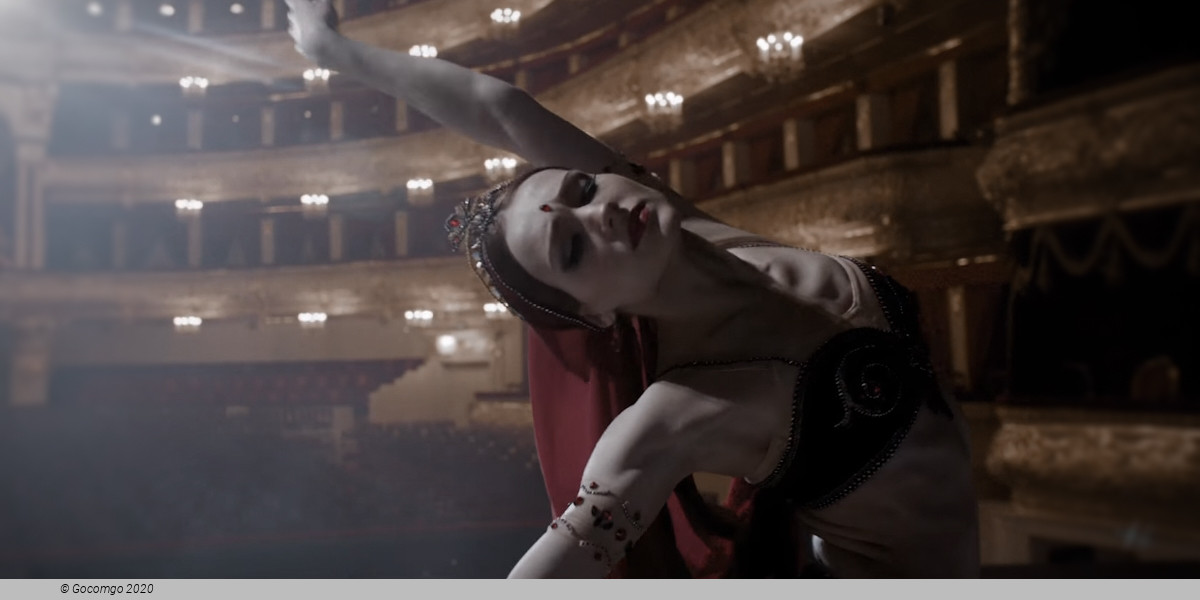
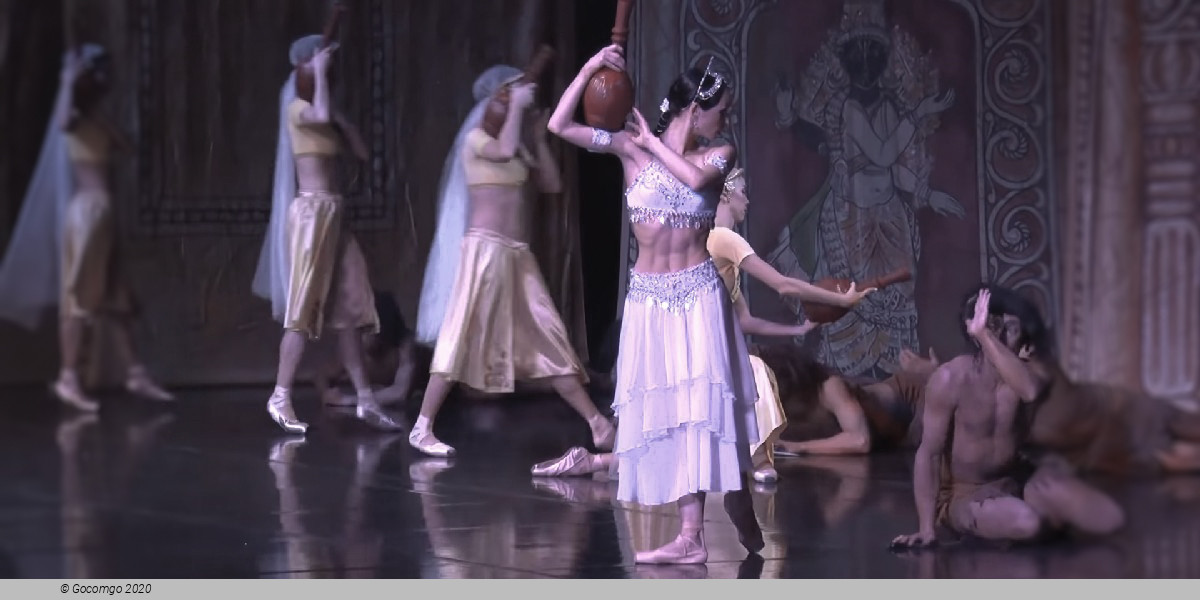
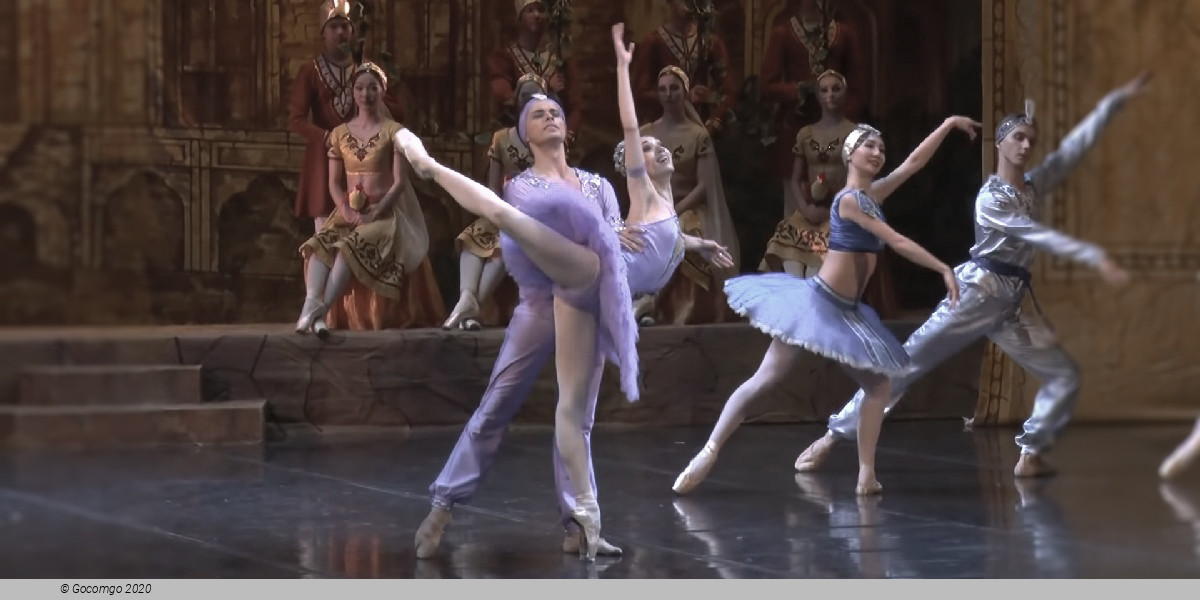
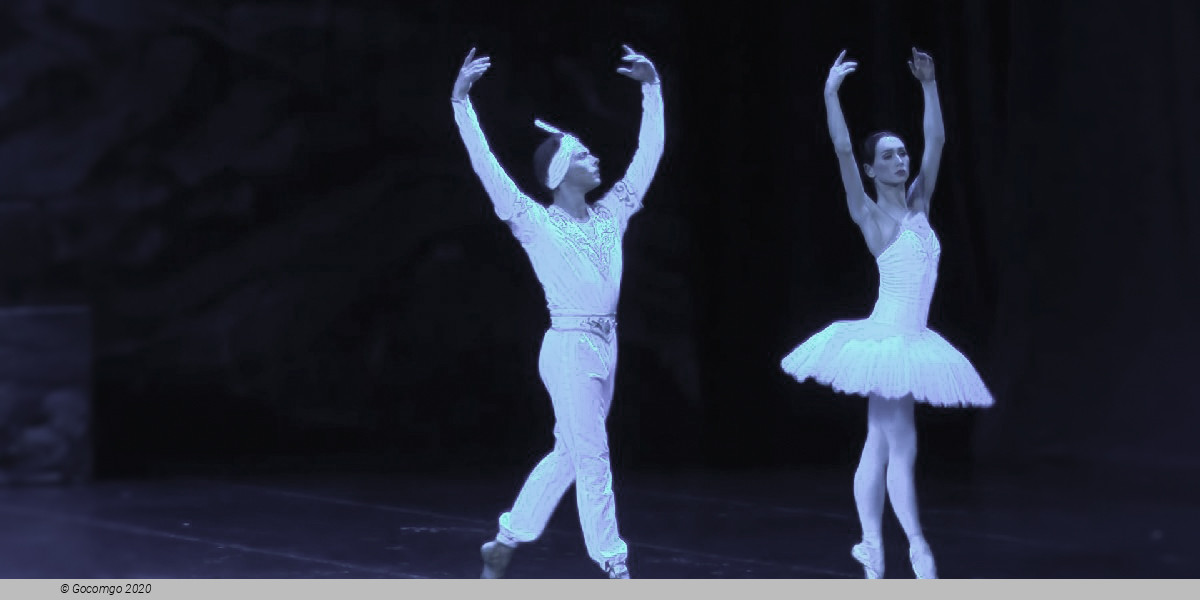
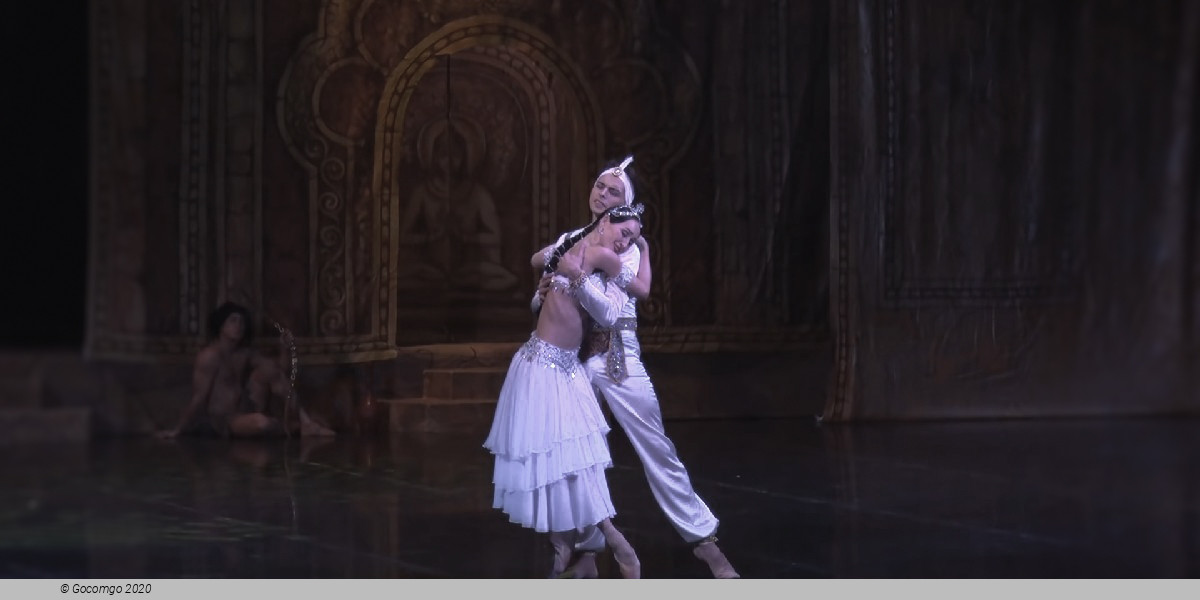
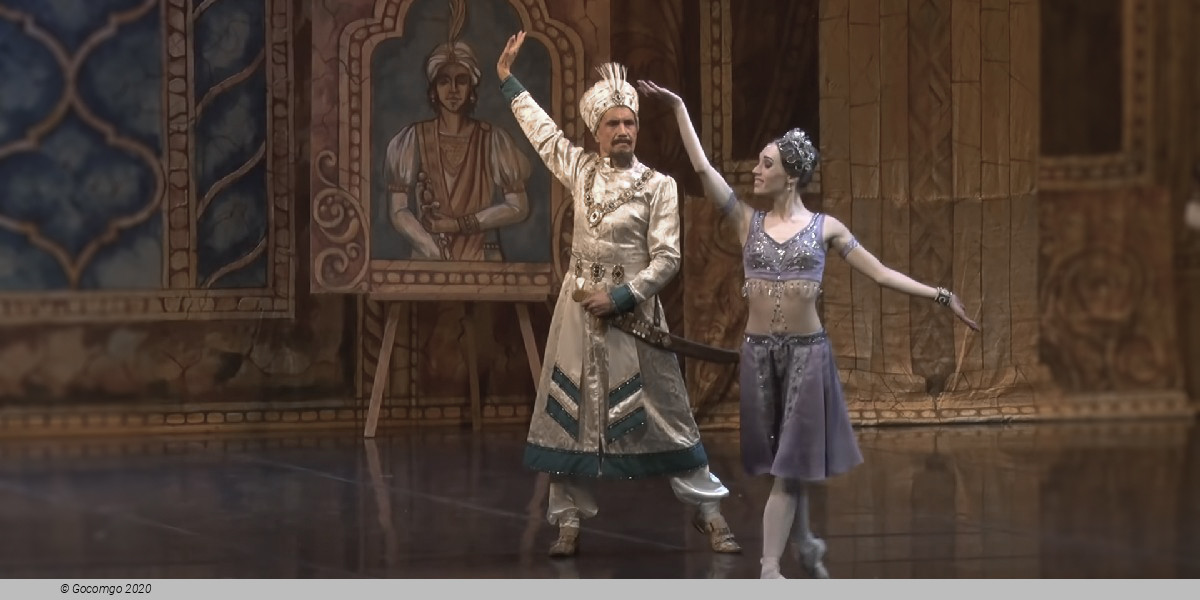
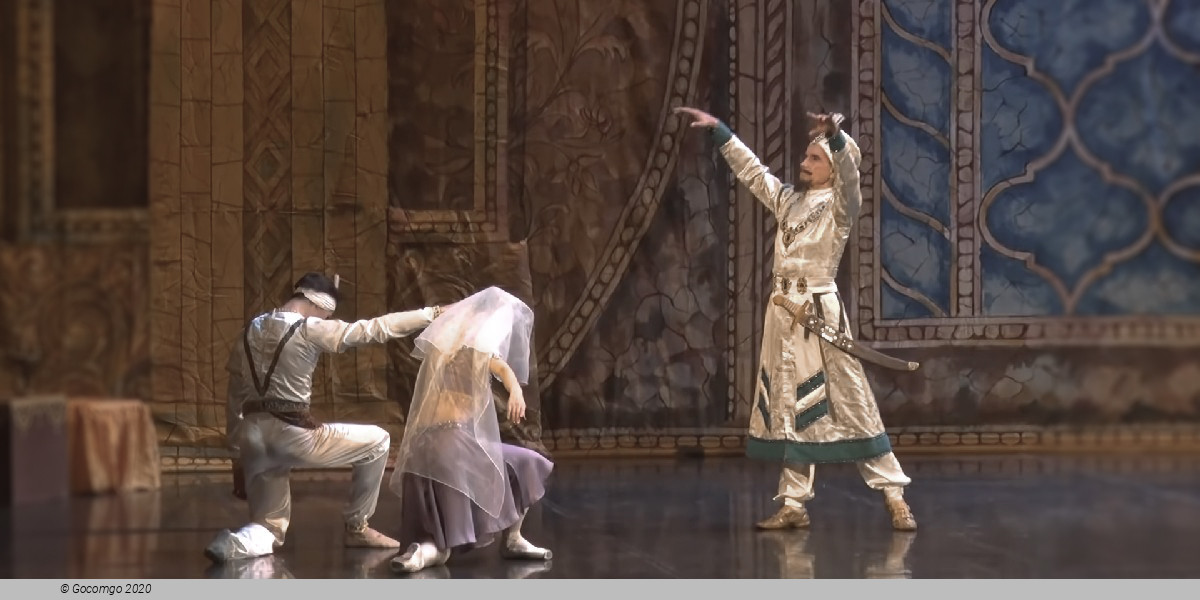
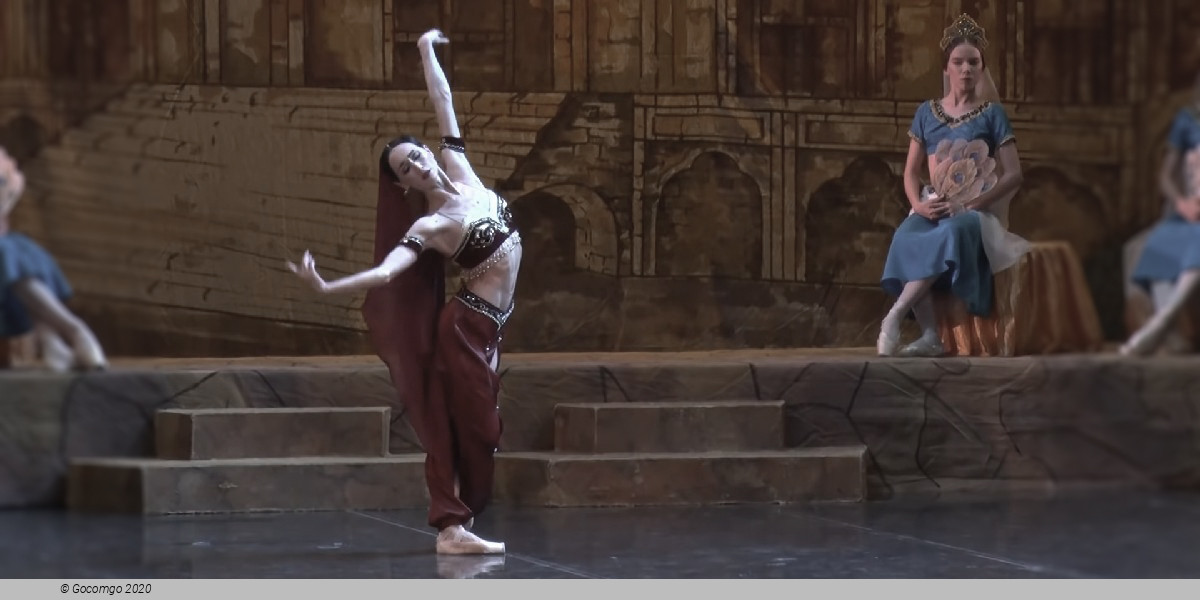
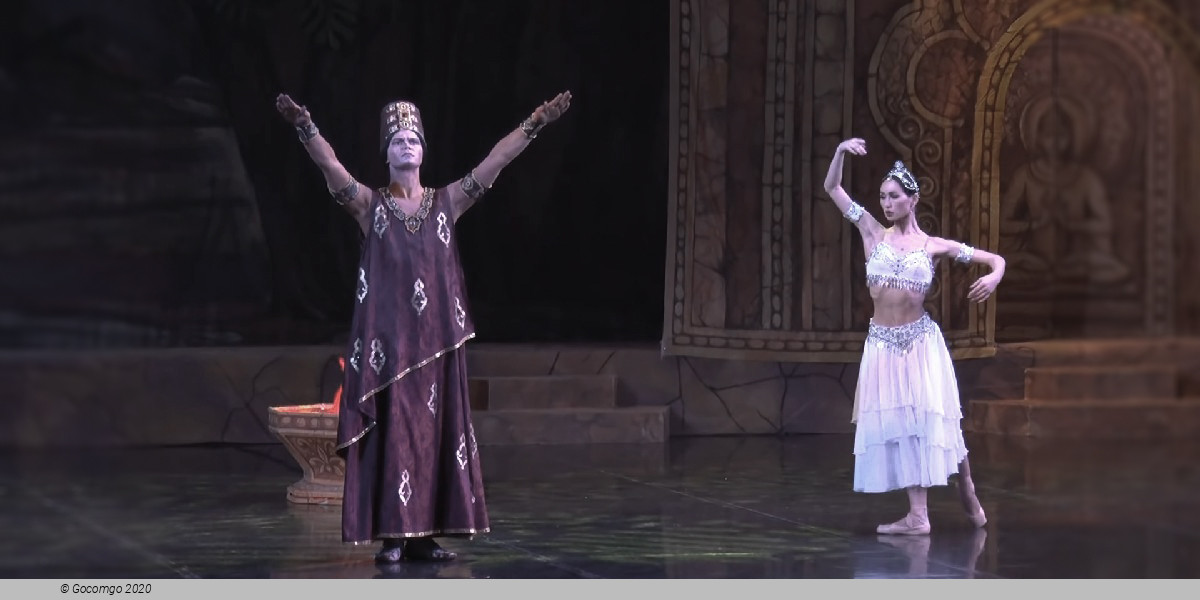
 Teatralnaya Square 1
Teatralnaya Square 1